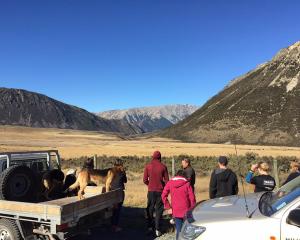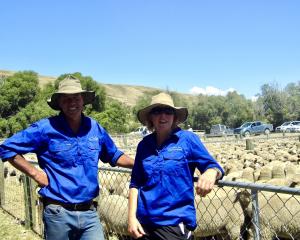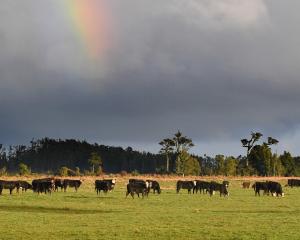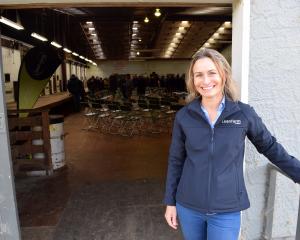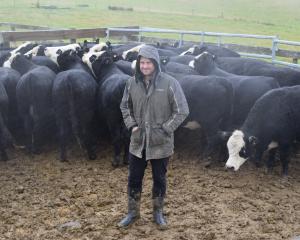
Helped by sheep and beef farmers Laurie Paterson, of Waikaka, breeder and judge Bruce Robertson, of Duncraigen Herefords stud, Mimihau, talked about the qualities to look for when investing thousands of dollars in buying a bull, and used several Hereford and Angus animals to illustrate his points.
He was speaking to about 70 farmers at the Beef and Lamb New Zealand bull-focused field day on Patearoa and Stonehenge Stations on April 24.
Mr Robertson said the average bull, which cost thousands, lasted about three and a-half years when they should be working for up to five.
The testicles and sheath should be the first consideration, and then the animal's structure and feet should be looked at secondly.
As a good indicator of fertility, the scrotum should be about the size of two Speight's cans.
The bull's sheath should be well tucked into the body rather than loose or flopping, which could result in a broken penis.
As that was extremely painful, the only result for the bull was euthanasia and a waste of investment.
He said it was also important to look at the foot claws to see if they grew evenly, were open and divergent or likely to over grow and become a scissor claw.
Hooves should be flat and square to the ground.
''When walking, the back feet should end up where the front feet left,'' he said.
''That means the shoulders, feet and hocks are right and when they are right, the body is in sync.''
The legs should be straight as opposed to bow-legged or knock-kneed and also straight in the hock.
That also meant the bull would be able to mount a cow successfully on the side of a Central Otago hill.
''Bowed back legs put pressure on joints,'' he said.
''It should also have good eye muscle.
''The eyes [should be] well set in and I want to see a big, deep strong jaw.
''If it can't walk on the hill and if it can't eat, it is no bloody use.
''If you get that right, then everything goes along with it,'' he said.
Temperament was also important, although these days it was unusual to find a stroppy bull.
-By Yvonne O'Hara


